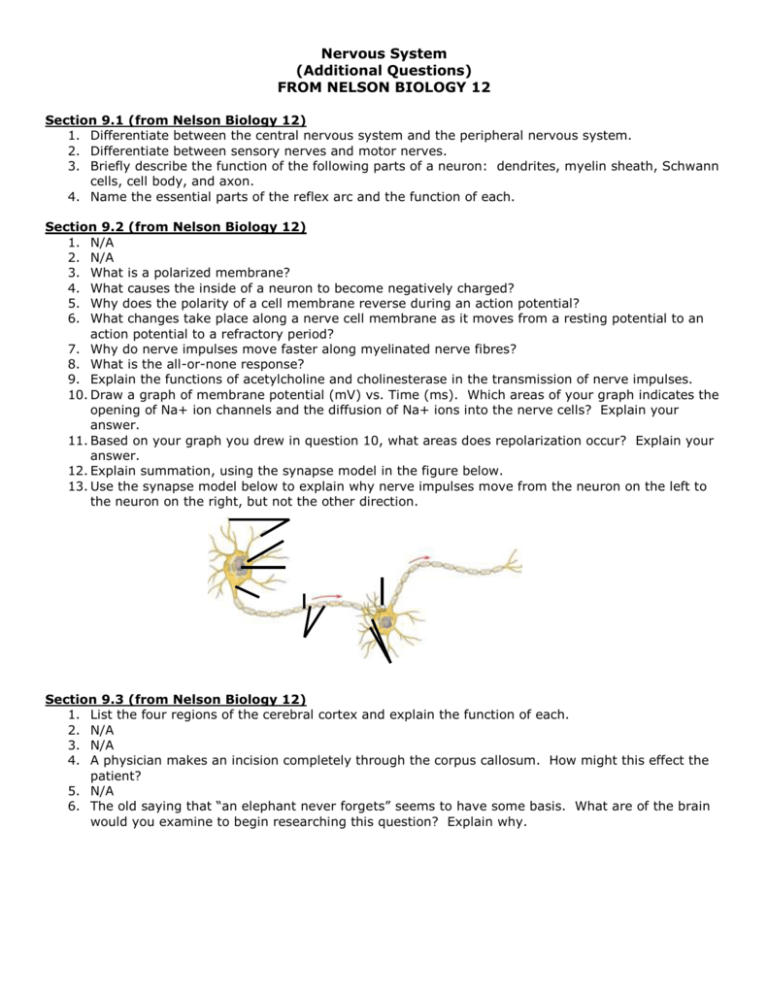Nervous System Additional Questions
advertisement

Nervous System (Additional Questions) FROM NELSON BIOLOGY 12 Section 9.1 (from Nelson Biology 12) 1. Differentiate between the central nervous system and the peripheral nervous system. 2. Differentiate between sensory nerves and motor nerves. 3. Briefly describe the function of the following parts of a neuron: dendrites, myelin sheath, Schwann cells, cell body, and axon. 4. Name the essential parts of the reflex arc and the function of each. Section 9.2 (from Nelson Biology 12) 1. N/A 2. N/A 3. What is a polarized membrane? 4. What causes the inside of a neuron to become negatively charged? 5. Why does the polarity of a cell membrane reverse during an action potential? 6. What changes take place along a nerve cell membrane as it moves from a resting potential to an action potential to a refractory period? 7. Why do nerve impulses move faster along myelinated nerve fibres? 8. What is the all-or-none response? 9. Explain the functions of acetylcholine and cholinesterase in the transmission of nerve impulses. 10. Draw a graph of membrane potential (mV) vs. Time (ms). Which areas of your graph indicates the opening of Na+ ion channels and the diffusion of Na+ ions into the nerve cells? Explain your answer. 11. Based on your graph you drew in question 10, what areas does repolarization occur? Explain your answer. 12. Explain summation, using the synapse model in the figure below. 13. Use the synapse model below to explain why nerve impulses move from the neuron on the left to the neuron on the right, but not the other direction. Section 9.3 (from Nelson Biology 12) 1. List the four regions of the cerebral cortex and explain the function of each. 2. N/A 3. N/A 4. A physician makes an incision completely through the corpus callosum. How might this effect the patient? 5. N/A 6. The old saying that “an elephant never forgets” seems to have some basis. What are of the brain would you examine to begin researching this question? Explain why.











